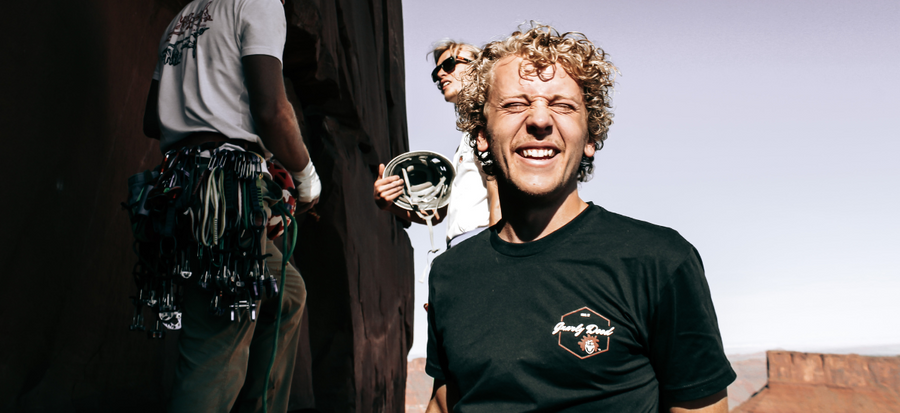Want to become a climber?
Are you looking to begin rock climbing? If you are looking into pushing yourself, while hanging out with awesome people, and going to many different amazing outdoor places, then rock climbing might just be the perfect sport for you. Whether you're drawn to the breathtaking views, the thrill of conquering new heights, or the sense of accomplishment that comes with scaling a challenging route, rock climbing offers a unique and rewarding experience. If you're asking yourself, "How do I start rock climbing?" this blog post is here to guide you through the essential gear and knowledge you'll need to get started.

Here's what you'll need:
1. Climbing Shoes:
One of the most critical pieces of equipment for any rock climber is a good pair of climbing shoes. These specialized shoes are designed to provide excellent grip and sensitivity on the rock surface, allowing you to maintain traction and feel even the tiniest footholds. When choosing climbing shoes, opt for a snug, but not overly tight fit, as this will optimize your performance and comfort.
2. Harness:
A harness is an essential piece of safety equipment that connects you to the rope during climbs. It distributes your weight evenly, ensuring a comfortable and secure fit while you're suspended on the wall. Look for a harness that is adjustable, lightweight, and features a belay loop for attaching your rope.
3. Helmet:
Safety should always be a top priority in rock climbing, and a helmet is a crucial component for protecting your head from falling rocks, debris, or potential impacts during a climb. Choose a helmet that fits properly and is specifically designed for climbing to ensure maximum safety.
4. Belay Device and Carabiners:
Belaying is the technique used to control the rope while climbing, and a belay device is an essential tool for this task. There are various types of belay devices available, such as tube-style or assisted-braking devices. Additionally, you'll need a few carabiners to attach your belay device to your harness and for other equipment connections. We recommend a Petzl Gri Gri as the safest option when belaying.
5. Climbing Rope:
A reliable climbing rope is indispensable for any climber. Look for ropes that are durable, have a suitable diameter for your intended type of climbing, and meet safety standards. Dynamic ropes are commonly used for rock climbing due to their ability to absorb the force of a fall.
6. Chalk Bag and Chalk:
To maintain a firm grip and prevent your hands from getting excessively sweaty, climbers often use chalk. A chalk bag, worn at the waist or clipped to your harness, holds the chalk, allowing you to access it easily during climbs. Here at Gnarly Dood we make sure your chalk bag doesn't only hold chalk but also adds a stylish piece of gear to your collection.
7. Quickdraws:
Quickdraws are used to connect the rope to bolts or fixed anchors on the wall. They consist of two carabiners joined by a sturdy sling. As you progress in your climbing skills, investing in a set of quickdraws will become necessary for lead climbing and outdoor climbing.
8. Clothing:
Wear comfortable, flexible clothing that allows for a wide range of movement. Opt for moisture-wicking fabrics that dry quickly and provide insulation in colder conditions. A light rain jacket and a hat are also recommended for outdoor climbing, as weather conditions can change unexpectedly.
9. Training and Education:
While gear is essential, investing in training and education should be your top priority. Start by taking a beginner's course at a reputable climbing gym or hiring a certified climbing instructor. Learn proper climbing techniques, safety protocols, and how to use your equipment correctly. It's crucial to understand the fundamentals before venturing outdoors. Try to make friends at a local climbing gym, you can never have too many rock climbing buddies!


Conclusion
Embarking on a rock climbing journey is an exciting endeavor that promises adventure, personal growth, and a close connection with nature. As a beginner, acquiring the necessary gear is essential for a safe and enjoyable experience. Remember to prioritize your safety by investing in quality





